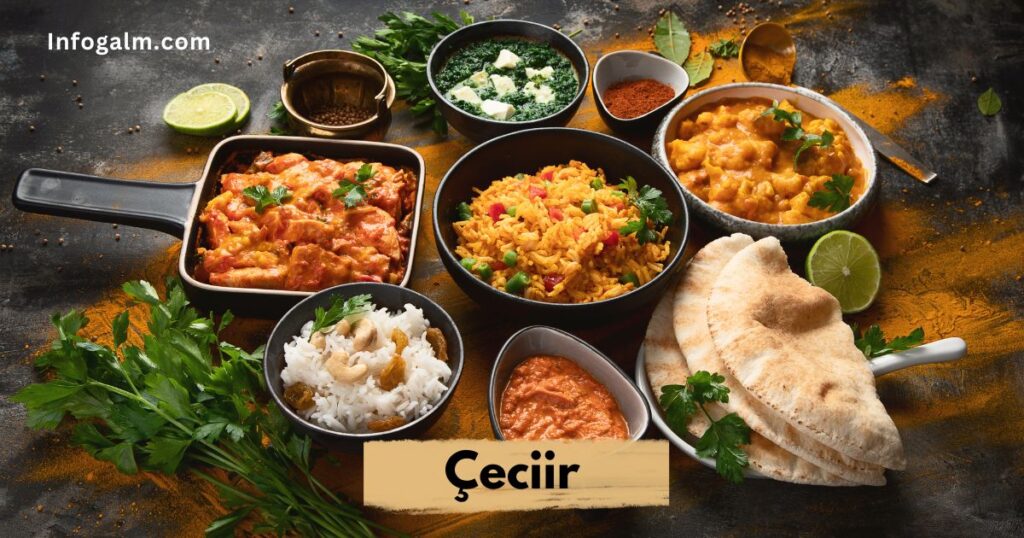Turkish cuisine, with its rich tapestry of flavours and diverse influences, is celebrated globally as one of the most treasured culinary traditions. Among its many delights, çeciir stands out as a dish that beautifully encapsulates the essence of Turkish cooking. This article delves into the history, ingredients, preparation methods, and cultural significance of çeciir while also addressing some common questions about this culinary gem.
What is Çeciir?
Çeciir is a beloved dish in Turkish cuisine, known for its unique blend of flavours and textures. Typically made with grains, legumes, vegetables, and aromatic spices, it is a hearty and nourishing meal. Often enjoyed as a main course, çeciir is lauded for its simplicity and wholesome ingredients.
Historical Background
The origins of çeciir trace back to ancient Anatolian cuisine, where everyday meals were crafted using local ingredients and simple cooking techniques. Over the centuries, çeciir has evolved, incorporating flavours from various regions and cultures, reflecting Turkey’s rich culinary heritage. Today, it remains a staple in many Turkish households, symbolizing comfort and tradition.
Key Ingredients
What makes çeciir truly special is its use of fresh, local ingredients and its versatility. While recipes can vary, some standard components include:
- Bulgur: A type of cracked wheat that serves as the base in many çeciir recipes. It is known for its chewy texture and nutty flavour.
- Legumes: Lentils and chickpeas are often added for protein and substance.
- Vegetables: Onions, tomatoes, peppers, and seasonal vegetables enhance the dish’s flavour and nutritional value.
- Spices and Herbs: Cumin, paprika, mint, and parsley are frequently used to add depth and aroma to the dish.
- Extra Virgin Olive Oil: A staple in Turkish cooking, it is used both for cooking and drizzling over the finished dish for added richness.
Preparation Method
The preparation of çeciir is straightforward, making it an accessible dish for home cooks. Here is a primary method:
- Sautéing: Start by softening and flavouring finely chopped onions and garlic in olive oil.
- Adding Vegetables: Dice peppers, tomatoes, and any other preferred vegetables. Cook until they begin to soften.
- Incorporating Legumes: Stir in pre-cooked lentils or chickpeas into the vegetable mixture.
- Cooking Bulgur: Add bulgur to the pot along with enough water or broth to cover the ingredients. Season with paprika, cumin, salt, and any additional spices of your choice.
- Simmering: Cover and simmer on low heat for about 20 to 25 minutes until the bulgur is cooked and has absorbed the liquid.
- Finishing Touches: Just before serving, mix in fresh herbs like mint or parsley. For extra flavour, drizzle with additional olive oil.
Cultural Significance
Çeciir is more than just a dish; it represents Turkish hospitality and culinary heritage. Given the communal nature of Turkish culture, it is often served during family gatherings, festivals, and special occasions. The dish’s simplicity and use of wholesome ingredients also highlight the importance of sustainability and respect for the land in Turkish cuisine.
Frequently Asked Questions (FAQs)
Can çeciir be made with different grains?
Yes, while bulgur is the traditional grain used in çeciir, you can experiment with other grains like quinoa, rice, or couscous to suit your taste and dietary preferences.
Is çeciir suitable for vegans and vegetarians?
Absolutely. It is naturally vegetarian, and by using vegetable-based broth, it can easily be made vegan.
What side dishes pair well with çeciir?
Çeciir pairs wonderfully with a variety of side dishes such as pickles, yoghurt, fresh salads, and flatbreads like pita or lavash.
Conclusion
Çeciir is a testament to the depth and diversity of Turkish cuisine. Its traditional significance and simple yet flavorful ingredients make it a timeless dish that transcends generations. Whether you are a seasoned cook or new to Turkish cuisine, they offers a delightful, nutritious, and deeply traditional culinary experience.







